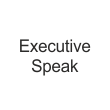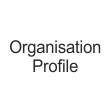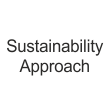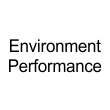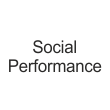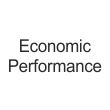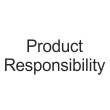|
|
| |
| |
| ANNEXURES |
| GRI G3 INDEX |
| |
| Profile Disclosures |
Profile
Disclosures |
Disclosure |
Level of
reporting |
Location of
disclosure |
For partially
reported disclosures,
indicate the part
not reported |
Reason for
omission |
Explanation for the
reason for omission |
| 1.1 |
Statement from the most senior decision-maker of the organisation.
|
Fully
|
Message from Chairman
Message from
Co-Chairman & CEO |
|
|
|
| 1.2 |
Description of key impacts, risks, and opportunities.
|
Fully
|
Message from Chairman
Message from
Co-Chairman & CEO
Risk Prioritisation
|
|
|
|
| 2.1 |
Name of the organisation. |
Fully
|
Organisation Profile |
|
|
|
| 2.2 |
Primary brands, products, and/or services.
|
Fully
|
Our Businesses
Affordable & Innovative Medicine |
|
|
|
| 2.3 |
Operational structure of the organisation, including main divisions, operating companies, subsidiaries, and joint ventures.
|
Fully
|
Management Council
Operational Footprint |
|
|
|
| 2.4 |
Location of organisation's headquarters.
|
Fully
|
Operational Footprint |
|
|
|
| 2.5 |
Number of countries where the organisation operates, and names of countries with either major operations or that are specifically relevant to the sustainability issues covered in the report.
|
Fully
|
Operational Footprint
|
|
|
|
| 2.6 |
Nature of ownership and legal form.
|
Fully
|
Corporate Governance, AR 2015
(Dr. Reddy's Laboratories Ltd. (NYSE: RDY) is an integrated global pharmaceutical company)
|
|
|
|
| 2.7 |
Markets served (including geographic breakdown, sectors served, and types of customers/beneficiaries).
|
Fully
|
Our Businesses
Operational Footprint
|
|
|
|
| 2.8 |
Scale of the reporting organisation.
|
Fully
|
Financials
|
|
|
|
| 2.9 |
Significant changes during the reporting period regarding size, structure, or ownership.
|
Fully
|
1 new API plant and 1 new formulations plant have be added to the company's operations in India
|
|
|
|
| 2.10 |
Awards received in the reporting period.
|
Fully
|
Recognitions
|
|
|
|
| 3.1 |
Reporting period (e.g., fiscal/calendar year) for information provided.
|
Fully
|
Reporting Scope |
|
|
|
| 3.2 |
Date of most recent previous report (if any).
|
Fully
|
8/9/2014
Reporting Scope
|
|
|
|
| 3.3 |
Reporting cycle (annual, biennial, etc.)
|
Fully
|
Reporting Scope
|
|
|
|
| 3.4 |
Contact point for questions regarding the report or its contents.
|
Fully
|
Reporting Scope
|
|
|
|
| 3.5 |
Process for defining report content.
|
Fully
|
Reporting Scope
Materiality |
|
|
|
| 3.6 |
Boundary of the report (e.g., countries, divisions, subsidiaries, leased facilities, joint ventures, suppliers). See GRI Boundary Protocol for further guidance.
|
Fully
|
Reporting Scope
|
|
|
|
| 3.7 |
State any specific limitations on the scope or boundary of the report (see completeness principle for explanation of scope).
|
Fully
|
Reporting Scope
|
|
|
|
| 3.8 |
Basis for reporting on joint ventures, subsidiaries, leased facilities, outsourced operations, and other entities that can significantly affect comparability from period to period and/or between organisations.
|
Fully
|
Reporting Scope
|
|
|
|
| 3.9 |
Data measurement techniques and the bases of calculations, including assumptions and techniques underlying estimations applied to the compilation of the Indicators and other information in the report. Explain any decisions not to apply, or to substantially diverge from, the GRI Indicator Protocols.
|
Fully
|
Reporting Scope
KPIs
|
|
|
|
| 3.10 |
Explanation of the effect of any re-statements of information provided in earlier reports, and the reasons for such re-statement (e.g.,mergers/acquisitions, change of base years/periods, nature of business, measurement methods).
|
Fully
|
Nil
|
|
|
|
| 3.11 |
Significant changes from previous reporting periods in the scope, boundary, or measurement methods applied in the report.
|
Fully
|
1 new API plant and 1 new formulations plant have been added to the company's operations in India and its report scope
|
|
|
|
| 3.12 |
Table identifying the location of the Standard Disclosures in the report.
|
Fully
|
Report Index |
|
|
|
| 3.13 |
Policy and current practice with regard to seeking external assurance for the report.
|
Fully
|
Assurance Statement |
|
|
|
| 4.1 |
Governance structure of the organisation, including committees under the highest governance body responsible for specific tasks, such as setting strategy or organisational oversight.
|
Fully
|
Board of Directors
Board Committees |
|
|
|
| 4.2 |
Indicate whether the Chair of the highest governance body is also an executive officer.
|
Fully
|
Board of Directors
|
|
|
|
| 4.3 |
For organisations that have a unitary board structure, state the number of members of the highest governance body that are independent and/or non-executive members.
|
Fully
|
Board of Directors
|
|
|
|
| 4.4 |
Mechanisms for shareholders and employees to provide recommendations or direction to the highest governance body.
|
Fully
|
Stakeholder Engagement Mechanisms
Investor Day |
|
|
|
| 4.5 |
Linkage between compensation for members of the highest governance body, senior managers, and executives (including departure arrangements), and the organisation's performance (including social and environmental performance).
|
Fully
|
Board of Directors |
|
|
|
| 4.6 |
Processes in place for the highest governance body to ensure conflicts of interest are avoided.
|
Fully
|
Governance Mechanisms |
|
|
|
| 4.7 |
Process for determining the qualifications and expertise of the members of the highest governance body for guiding the organisation's strategy on economic, environmental, and social topics.
|
Fully
|
Board of Directors
Governance Mechanism |
|
|
|
| 4.8 |
Internally developed statements of mission or values, codes of conduct, and principles relevant to economic, environmental, and social performance and the status of their implementation.
|
Fully
|
Purpose & Promise
Core Values
COBE
SHE Policy
Env Roadmap
Safety Roadmap |
|
|
|
| 4.9 |
Procedures of the highest governance body for overseeing the organisation's identification and management of economic, environmental, and social performance, including relevant risks and opportunities, and adherence or compliance with internationally agreed standards, codes of conduct, and principles.
|
Fully
|
Governance
Risk Management
|
|
|
|
| 4.10 |
Processes for evaluating the highest governance body's own performance, particularly with respect to economic, environmental, and social performance.
|
Fully
|
The Board has carried out an annual evaluation of its own performance, as well as the working of its Committees, AR 14-15
|
|
|
|
| 4.11 |
Explanation of whether and how the precautionary approach or principle is addressed by the organisation.
|
Fully
|
Risk Management |
|
|
|
| 4.12 |
Externally developed economic, environmental, and social charters, principles, or other initiatives to which the organisation subscribes or endorses.
|
Fully
|
TERI BCSD Sustainability Charter, CII’s Code for ecologically sustainable business growth, Frost & Sullivan IMEA benchmarking, UN Global Compact
|
|
|
|
| 4.13 |
Memberships in associations (such as industry associations) and/or national/international advocacy organisations in which the organisation: * Has positions in governance bodies; * Participates in projects or committees; * Provides substantive funding beyond routine membership dues; or * Views membership as strategic.
|
Fully
|
Advocacy |
|
|
|
| 4.14 |
List of stakeholder groups engaged by the organisation.
|
Fully
|
Stakeholder Engagement Mechanism |
|
|
|
| 4.15 |
Basis for identification and selection of stakeholders with whom to engage.
|
Fully
|
Stakeholders |
|
|
|
| 4.16 |
Approaches to stakeholder engagement, including frequency of engagement by type and by stakeholder group.
|
Fully
|
Stakeholder Engagement |
|
|
|
| 4.17 |
Key topics and concerns that have been raised through stakeholder engagement, and how the organisation has responded to those key topics and concerns, including through its reporting.
|
Fully
|
Materiality |
|
|
|
|
| |
| |
| |
| Economic |
Profile
Disclosures |
Disclosure |
Level of
reporting |
Location of
disclosure |
For partially
reported disclosures,
indicate the part
not reported |
Reason for
omission |
Explanation for the
reason for omission |
To be
reported in |
| DMA EC |
Disclosure on Management Approach EC
|
Fully
|
DMA |
|
|
|
|
| EC1
|
Direct economic value generated and distributed, including revenues, operating costs, employee compensation, donations and other community investments, retained earnings, and payments to capital providers and governments.
|
Fully
|
Economic Value Generated
Economic Value Distributed |
|
|
|
|
| EC2
|
Financial implications and other risks and opportunities for the organisation's activities due to climate change.
|
Fully
|
Message from Chairman
Message from Co-chairman & CEO |
|
|
|
|
| EC3
|
Coverage of the organisation's defined benefit plan obligations.
|
Fully
|
Employee Benefits |
|
|
|
|
| EC4
|
Significant financial assistance received from government.
|
Fully
|
We did not receive govt assistance, during the reporting period
|
|
|
|
|
| EC5
|
Range of ratios of standard entry level wage compared to local minimum wage at significant locations of operation.
|
Fully
|
We are iin the process of tracking the ratio and aim to report in near future.
|
|
|
|
2016 |
| EC6
|
Policy, practices, and proportion of spending on locally-based suppliers at significant locations of operation.
|
Fully
|
Local Leverage |
|
|
|
|
| EC7
|
Procedures for local hiring and proportion of senior management hired from the local community at significant locations of operation.
|
Fully
|
The selection assessment of members to the Board is based on a combination of criterion that includes ethics, personal and professional stature, domain expertise, gender diversity and specific qualification required for the position. The potential Board member is also assessed on the basis of independence criteria defined in Section 149(6) of the Companies Act, 2013 and Clause 49 of the Listing Agreement.
|
|
|
|
|
| EC8
|
Development and impact of infrastructure investments and services provided primarily for public benefit through commercial, in-kind, or pro bono engagement.
|
Fully
|
Social Impact Investment |
|
|
|
|
| EC9
|
Understanding and describing significant indirect economic impacts, including the extent of impacts.
|
Fully
|
SMT
Local Leverage |
|
|
|
|
|
| |
| |
| |
| Environmental
|
Profile
Disclosures |
Disclosure |
Level of
reporting |
Location of
disclosure |
For partially
reported disclosures,
indicate the part
not reported |
Reason for
omission |
Explanation for the
reason for omission |
To be
reported in |
| DMA EN |
Disclosure on Management Approach EN
|
Fully
|
DMA
Energy
Emissions
Water
Waste |
|
|
|
|
| EN1
|
Materials used by weight or volume.
|
Fully
|
Waste Materials |
|
|
|
|
| EN2
|
Percentage of materials used that are recycled input materials.
|
Fully
|
Pharma products are for human consumption, hence no recycled material is used. However during the manufacturing process, certain solvents of the same processes are recycled and reused in the process.
|
|
|
|
|
| EN3
|
Direct energy consumption by primary energy source.
|
Fully
|
Energy Mix
Energy |
|
|
|
|
| EN4
|
Indirect energy consumption by primary source.
|
Fully
|
Energy Mix
Energy
|
|
|
|
|
| EN5
|
Energy saved due to conservation and efficiency improvements.
|
Fully
|
Energy Conservation |
|
|
|
|
| EN6
|
Initiatives to provide energy-efficient or renewable energy based products and services, and reductions in energy requirements as a result of these initiatives.
|
Fully
|
Energy Conservation
Case Study |
|
|
|
|
| EN7
|
Initiatives to reduce indirect energy consumption and reductions achieved.
|
Fully
|
Energy Conservation
Case Study
|
|
|
|
|
| EN8
|
Total water withdrawal by source.
|
Fully
|
Water Requirement |
|
|
|
|
| EN9
|
Water sources significantly affected by withdrawal of water.
|
Partially
|
Water Requirement
|
|
|
|
|
| EN10
|
Percentage and total volume of water recycled and reused.
|
Fully
|
Dashboard |
|
|
|
|
| EN11
|
Location and size of land owned, leased, managed in, or adjacent to, protected areas and areas of high biodiversity value outside protected areas.
|
Fully
|
All manufacturing site's land is owned by company, are located in notified industrial estate except CTO - 5 which is located near Mirayalguda and it is located away from areas of high bio diversity and protected areas.
|
|
|
|
|
| EN12
|
Description of significant impacts of activities, products, and services on biodiversity in protected areas and areas of high biodiversity value outside protected areas.
|
Fully
|
All manufacturing site's land is owned by company, are located in notified industrial estate except CTO - 5 which is located near Mirayalguda and it is located away from areas of high bio diversity and protected areas.
|
|
|
|
|
| EN13
|
Habitats protected or restored.
|
Fully
|
Not Applicable
|
|
|
|
|
| EN14
|
Strategies, current actions, and future plans for managing impacts on biodiversity.
|
Fully
|
Plans are in place to develop a Biodiversity Park at CTO 5 in Miryalguda
|
|
|
|
2016 |
| EN15
|
Number of IUCN Red List species and national conservation list species with habitats in areas affected by operations, by level of extinction risk.
|
Fully
|
Not Applicable
|
|
|
|
|
| EN16
|
Total direct and indirect greenhouse gas emissions by weight.
|
Fully
|
Dashboard
|
|
|
|
|
| EN17
|
Other relevant indirect greenhouse gas emissions by weight.
|
Fully
|
Dashboard
Footprint Analysis |
|
|
|
|
| EN18
|
Initiatives to reduce greenhouse gas emissions and reductions achieved.
|
Fully
|
Initiatives to Curb Emissions |
|
|
|
|
| EN19
|
Emissions of ozone-depleting substances by weight.
|
Fully
|
KPIs |
|
|
|
|
| EN20
|
NOx, SOx, and other significant air emissions by type and weight.
|
Fully
|
KPIs
|
|
|
|
|
| EN21
|
Total water discharge by quality and destination.
|
Fully
|
Water Requirement |
|
|
|
|
| EN22
|
Total weight of waste by type and disposal method.
|
Fully
|
Waste Management |
|
|
|
|
| EN23
|
Total number and volume of significant spills.
|
Fully
|
There have been no significant spills in the reporting period.
|
|
|
|
|
| EN24
|
Weight of transported, imported, exported, or treated waste deemed hazardous under the terms of the Basel Convention Annex I, II, III, and VIII, and percentage of transported waste shipped internationally.
|
Fully
|
We do not import or export waste
|
|
|
|
|
| EN25
|
Identity, size, protected status, and biodiversity value of water bodies and related habitats significantly affected by the reporting organisation's discharges of water and runoff.
|
Fully
|
Not Applicable
|
|
|
|
|
| EN26
|
Initiatives to mitigate environmental impacts of products and services, and extent of impact mitigation.
|
Fully
|
Green Chemistry |
|
|
|
|
| EN27
|
Percentage of products sold and their packaging materials that are reclaimed by category.
|
Fully
|
Not Applicable
|
|
|
|
|
| EN28
|
Monetary value of significant fines and total number of non-monetary sanctions for non-compliance with environmental laws and regulations.
|
Fully
|
There were no fines in the reporting period
|
|
|
|
|
| EN29
|
Significant environmental impacts of transporting products and other goods and materials used for the organisation's operations, and transporting members of the workforce.
|
Partially
|
Sustainable Logistics |
|
|
|
|
| EN30
|
Total environmental protection expenditures and investments by type.
|
Partially
|
Environment Overview |
|
|
|
|
|
| |
| |
| |
| Social: Labor Practices and Decent Work |
|
Profile
Disclosures |
Disclosure |
Level of
reporting |
Location of
disclosure |
For partially
reported disclosures,
indicate the part
not reported |
Reason for
omission |
Explanation for the
reason for omission |
To be
reported in |
|
| Disclosure on Management Approach LA |
|
Fully
|
DMA |
|
|
|
|
| LA1 |
Total workforce by employment type, employment contract, and region. |
Partially
|
Employee Strength |
Employment Contract
|
Not available
|
Data tracking has been
intiated and shall be
reported in next
reporting cycle.
|
2016 |
| LA2
|
Total number and rate of employee turnover by age group, gender, and region.
|
Partially
|
Employee Strength |
Breakup
|
Not available
|
Data tracking has been
intiated and shall be
reported in next
reporting cycle.
|
2016 |
| LA3
|
Benefits provided to full-time employees that are not provided to temporary or part-time employees, by major operations. |
Partially
|
Employee Benefits |
|
|
|
|
| LA4
|
Percentage of employees covered by collective bargaining agreements.
|
Fully
|
"All unionised employees
retain the right to exercise
the option of collective
bargaining."
|
|
|
|
2016 |
| LA5
|
Minimum notice period(s) regarding significant operational changes, including whether it is specified in collective agreements.
|
Fully
|
Minimum Notice Period |
|
|
|
|
| LA6
|
Percentage of total workforce represented in formal joint management-worker health and safety committees that help monitor and advise on occupational health and safety programs.
|
Partially
|
Robust Governance |
|
|
|
|
| LA7
|
Rates of injury, occupational diseases, lost days, and absenteeism, and number of work-related fatalities by region.
|
Fully
|
Incident Statistics |
|
|
|
|
| LA8
|
Education, training, counseling, prevention, and risk-control programs in place to assist workforce members, their families, or community members regarding serious diseases.
|
Fully
|
Enhanced Awareness
Capability Programs |
|
|
|
|
| LA9
|
Health and safety topics covered in formal agreements with trade unions.
|
Fully
|
Health & Safety is covered in the Formal Agreements with trade unions
|
|
|
|
|
| LA10
|
Average hours of training per year per employee by employee category.
|
Partially
|
Developing Talent |
Training Hours
|
Not available
|
We currently monitor our training outcomes by head count. Average training
hours will be calculated next year.
|
2016 |
| LA11
|
Programs for skills management and lifelong learning that support the continued employability of employees and assist them in managing career endings.
|
Fully
|
Developing Talent
SMTs |
|
|
|
|
| LA12
|
Percentage of employees receiving regular performance and career development reviews.
|
Fully
|
Developing Talent |
|
|
|
|
| LA13
|
Composition of governance bodies and breakdown of employees per category according to gender, age group, minority group membership, and other indicators of diversity.
|
Partially
|
Board Committees
Employee Strength
Diversity Management |
Employees by
Age Group |
Not available
|
The data was not tracked in the reporting year and will be disclosed next year onward.
|
2016 |
| LA14
|
Ratio of basic salary of men to women by employee category.
|
Fully
|
We adhere to the merit-based remuneration philosophy.
The Men to Women basic salary ratio at Dr. Reddy's is 1:1 right from trainees, staff, junior & middle management. For Top mangement this ratio is 1.1:1
|
|
|
|
|
|
| |
| |
| |
| Social: Human Rights
|
Profile
Disclosures |
Disclosure |
Level of
reporting |
Location of
disclosure |
For partially
reported disclosures,
indicate the part
not reported |
Reason for
omission |
Explanation for the
reason for omission |
To be
reported in |
| DMA HR |
Disclosure on Management Approach HR
|
Fully
|
DMA
Human Rights |
|
|
|
|
| HR1
|
Percentage and total number of significant investment agreements that include human rights clauses or that have undergone human rights screening.
|
Fully
|
Before entering into any kind of investment agreement, we ensure that there is no potential for any human rights violation. Only when the same is confirmed do we go ahead with the agreement.
|
|
|
|
|
| HR2
|
Percentage of significant suppliers and contractors that have undergone screening on human rights and actions taken.
|
Fully
|
Human Rights |
|
|
|
|
| HR3
|
Total hours of employee training on policies and procedures concerning aspects of human rights that are relevant to operations, including the percentage of employees trained.
|
Partially
|
Our
Code of Business Conduct and Ethics sets
forth high standards of human rights. This applies to all our Directors employees, subsidiaries and affiliates.
|
Total Training Hours
|
Not available
|
The data was not tracked in the reporting year and will be disclosed next year onward.
|
2016 |
| HR4
|
Total number of incidents of discrimination and actions taken.
|
Fully
|
Human Rights
|
|
|
|
2016 |
| HR5
|
Operations identified in which the right to exercise freedom of association and collective bargaining may be at significant risk, and actions taken to support these rights.
|
Fully
|
Human Rights
|
|
|
|
|
| HR6
|
Operations identified as having significant risk for incidents of child labor, and measures taken to contribute to the elimination of child labor.
|
Fully
|
Human Rights
|
|
|
|
|
| HR7
|
Operations identified as having significant risk for incidents of forced or compulsory labor, and measures to contribute to the elimination of forced or compulsory labor.
|
Fully
|
Human Rights
|
|
|
|
|
| HR8
|
Percentage of security personnel trained in the organisation's policies or procedures concerning aspects of human rights that are relevant to operations.
|
Fully
|
All new security personnel undergo a human rights training during induction
|
|
|
|
|
| HR9
|
Total number of incidents of violations involving rights of indigenous people and actions taken.
|
Partially
|
No significant incidents of violations were reported in the reporting period
|
Total number
|
Not available
|
A robust mechanism is been developed to track the data
|
2016 |
|
| |
| |
| |
| Social: Society
|
Profile
Disclosures |
Disclosure |
Level of
reporting |
Location of
disclosure |
For partially
reported disclosures,
indicate the part
not reported |
Reason for
omission |
Explanation for the
reason for omission |
To be
reported in |
| DMA SO |
| Disclosure on Management Approach SO |
|
Fully
|
DMA
Corruption & Anti Competitive Behaviour
Public Policy
Compliance |
|
|
|
|
| SO1
|
Nature, scope, and effectiveness of any programs and practices that assess and manage the impacts of operations on communities, including entering, operating, and exiting.
|
Fully
|
Community Care |
|
|
|
|
| SO2 |
Percentage and total number of business units analyzed for risks related to corruption.
|
Fully
|
Corruption |
|
|
|
|
| SO3 |
Percentage of employees trained in organisation's anti-corruption policies and procedures.
|
Fully
|
Corruption
COBE |
|
|
|
|
| SO4 |
Actions taken in response to incidents of corruption.
|
Fully
|
No Material Frauds |
|
|
|
|
| SO5
|
Public policy positions and participation in public policy development and lobbying. |
Fully
|
Policy Advocacy |
|
|
|
|
| SO6
|
Total value of financial and in-kind contributions to political parties, politicians, and related institutions by country.
|
Fully
|
Our Code of Business Ethics mandates us to abstain from any contributions, in cash or kind, from the political fraternity.
|
|
|
|
|
| SO7
|
Total number of legal actions for anti-competitive behavior, anti-trust, and monopoly practices and their outcomes.
|
Fully
|
No Material Frauds |
|
|
|
|
| SO8
|
Monetary value of significant fines and total number of non-monetary sanctions for non-compliance with laws and regulations.
|
Fully
|
No Monetary Fines |
|
|
|
|
|
| |
| |
| |
| Social: Product Responsibility |
Profile
Disclosures |
Disclosure |
Level of
reporting |
Location of
disclosure |
For partially
reported disclosures,
indicate the part
not reported |
Reason for
omission |
Explanation for the
reason for omission |
To be
reported in |
| DMA PR
|
| Disclosure on Management Approach PR
|
|
Fully
|
DMA
Responsible Marketing |
|
|
|
|
| PR1
|
Life cycle stages in which health and safety impacts of products and services are assessed for improvement, and percentage of significant products and services categories subject to such procedures.
|
Fully
|
Product Safety |
|
|
|
|
| PR2
|
Total number of incidents of non-compliance with regulations and voluntary codes concerning health and safety impacts of products and services during their life cycle, by type of outcomes.
|
Fully
|
No monetary fines |
|
|
|
|
| PR3 |
Type of product and service information required by procedures, and percentage of significant products and services subject to such information requirements.
|
Fully
|
Marketing & Promotion |
|
|
|
|
| PR4 |
Total number of incidents of non-compliance with regulations and voluntary codes concerning product and service information and labeling, by type of outcomes.
|
Fully
|
No Material Recall
Customer Engagement |
|
|
|
|
| PR5 |
Practices related to customer satisfaction, including results of surveys measuring customer satisfaction.
|
Fully
|
Marketing & Promotion |
|
|
|
|
| PR6
|
Programs for adherence to laws, standards, and voluntary codes related to marketing communications, including advertising, promotion, and sponsorship.
|
Fully
|
Marketing & Promotion |
|
|
|
|
| PR7
|
Total number of incidents of non-compliance with regulations and voluntary codes concerning marketing communications, including advertising, promotion, and sponsorship by type of outcomes.
|
Fully
|
No such incidents were reported in the reporting period.
|
|
|
|
|
| PR8
|
Total number of substantiated complaints regarding breaches of customer privacy and losses of customer data.
|
Fully
|
No such incidents were reported in the reporting period.
|
|
|
|
|
| PR9
|
Monetary value of significant fines for non-compliance with laws and regulations concerning the provision and use of products and services.
|
Fully
|
No monetary fines |
|
|
|
|
|
| |
| |
|
| |
|
|


